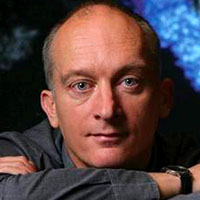Thursday, June 9
8:55 am – 9:30 am

Jeremy Smith
University of Tennessee and Oak Ridge National Laboratory
Jeremy C. Smith has led research groups in France, Germany and the United States. After education at University of Leeds and London University in 1985 he became a postdoctoral fellow and lecturer with Nobel Laureate Martin Karplus at Harvard University.
In 1989, he established a biomolecular simulation group at the Commissariat a l’Energie Atomique in Saclay, near Paris. In 1998, he became Chair of Computational Molecular Biophysics at the University of Heidelberg, and in 2006 became the first
University of Tennessee/Oak Ridge National Laboratory (ORNL) Governor’s Chair and also Founding Director of the ORNL Center for Molecular Biophysics, which currently encompasses seven research groups. In 2008 he was named Honorary Professor
of the University of Heidelberg. He received the ORNL Director’s Award for Individual Achievement in 2017.
Smith’s research interests include the high-performance computer simulation of biological macromolecules, supercomputing, bioenergy, environmental biogeochemistry, drug and vaccine design and biological neutron scattering. He has published over
400 peer-reviewed scientific articles. 117 people have worked in his research groups, including 17 staff, 40 postdocs, 43 graduate students and 8 long-term visitors. 40 former group members have moved on to university faculty positions, 11 are national
laboratory staff scientists and 14 work in industry.